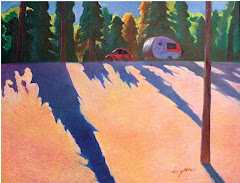


This place is eerie and haunting. Emigrants numbering around 400,000 traveled across Wyoming on the Oregon Trail from 1840-1860. My family on my father's side, Sowbys and Pettigrews, were on the Trail. Reaching Independence Rock marked 1/3 of the 2,000 mile distance from Missouri to the western frontier. Independence Rock is one of the most famous landmarks on the Oregon Trail. Emigrants wanted to reach the rock by the 4th of July to ensure passage over the western mountain ranges before winter snows.
Rachel Taylor, age 15, 1853, wrote in her journal:
July 21st
Started in good season and about noon reached the Sweetwater, a swift clear stream. Later in the day passed Independence Rock. We forded the river here and were somewhat hindered. Encamped near the river where grass is abundant. We have here a frightful as well as romantic situation. Just back of us Independence Rock stands out in bold relief, and in front of us yawns the Devils Gate.
Cecelia Adams & Parthenia Blank, twin sisters, age 23, 1852, wrote:
25 Sun this morning we started at 3 o’clock to feed and get breakfast. Sand very deep and dust very troublesome. Stopped for dinner opposite Independence Rock. It is a great curiosity but we were all so tired that we could not go to the top of it. It is almost entirely covered with names of emigrants. Went on to the Devil’s Gate and encamped. This is a great curiosity but we have not time to visit it and regret it very much. Passed 3 graves. Forded the Sweet water.



























